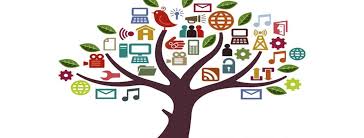 Each of several recent years, AARP has surveyed older adults about tech use. This year’s report is remarkable – they created a new online survey segment, the 80+ age range. Responses were not too surprising. There was skepticism about whether tech can enable a healthy life – the percentage dropping among those aged 70+ since last year. Perhaps they know that a healthy life also depends on diet and exercise – and that 40% of Americans 65+ are obese. Remember that only 23% of adults aged 65+ exercise in accordance with federal guidelines. Those guidelines include 2 days per week of strength training, which helps retain muscle mass, improve balance and reduce risk from falls.
Each of several recent years, AARP has surveyed older adults about tech use. This year’s report is remarkable – they created a new online survey segment, the 80+ age range. Responses were not too surprising. There was skepticism about whether tech can enable a healthy life – the percentage dropping among those aged 70+ since last year. Perhaps they know that a healthy life also depends on diet and exercise – and that 40% of Americans 65+ are obese. Remember that only 23% of adults aged 65+ exercise in accordance with federal guidelines. Those guidelines include 2 days per week of strength training, which helps retain muscle mass, improve balance and reduce risk from falls.
Tech ownership is pervasive among older adults. That includes Smartphones, Tablets, Smart TVs, desktop computers, and Bluetooth headsets. These days, if you need to buy a TV, it is, by definition ‘smart.’ Although perhaps utilizing its capabilities may be baffling, at least for a while. Ditto the smartphone – where 91% of those aged 50+ have a smartphone. The dumb, aka feature phone has a 2% market share.
Whose job is it anyway to help older adults gain mastery of this tech? Trial and error is the norm. Is this where I ‘long press’ to make something happen? Or should I swipe up, Swipe sideways? Sometimes, the tech vendor gets involved – see AT&T and the National Council on Aging (NCOA) partnership to train 100,000 older adults at senior centers as well as online. Verizon has partnered with OATS for its volunteers to offer virtual training. Verizon also offers an Accessibility guide for older adults, after looking at it, perhaps only useful to trainers working with older adults.
The Digital Divide is perpetually redefined. Long ago, it was no-computer versus computer. Then it was no-Internet versus Internet access. More recently it was no smartphone, no smart speakers, no wearables, and so it proceeds to the next stage. No AI tools versus capitalizing on AI-enabled offerings? The consumer, especially those 58 million older adults, are pushed by family, peers and tech vendors to get the next new thing. According to the AARP survey, most smartphones (among the whole 50+ group) were purchased in the last two years. No doubt that was partially due to the device’s built-in (planned) obsolescence – perhaps resisted for a year or two, but generally accepted by consumers. For example, content to be accessed exceeds the capability of the device to present it. Did people shop for smart TVs, or is that what’s pushed in the store? Do smart watches deliberately run out of battery before you do? Unfortunately, we know the answer.
[See recent report, The Future of AI in Senior Living and Care]

 Each of several recent years, AARP has surveyed older adults about tech use. This year’s
Each of several recent years, AARP has surveyed older adults about tech use. This year’s